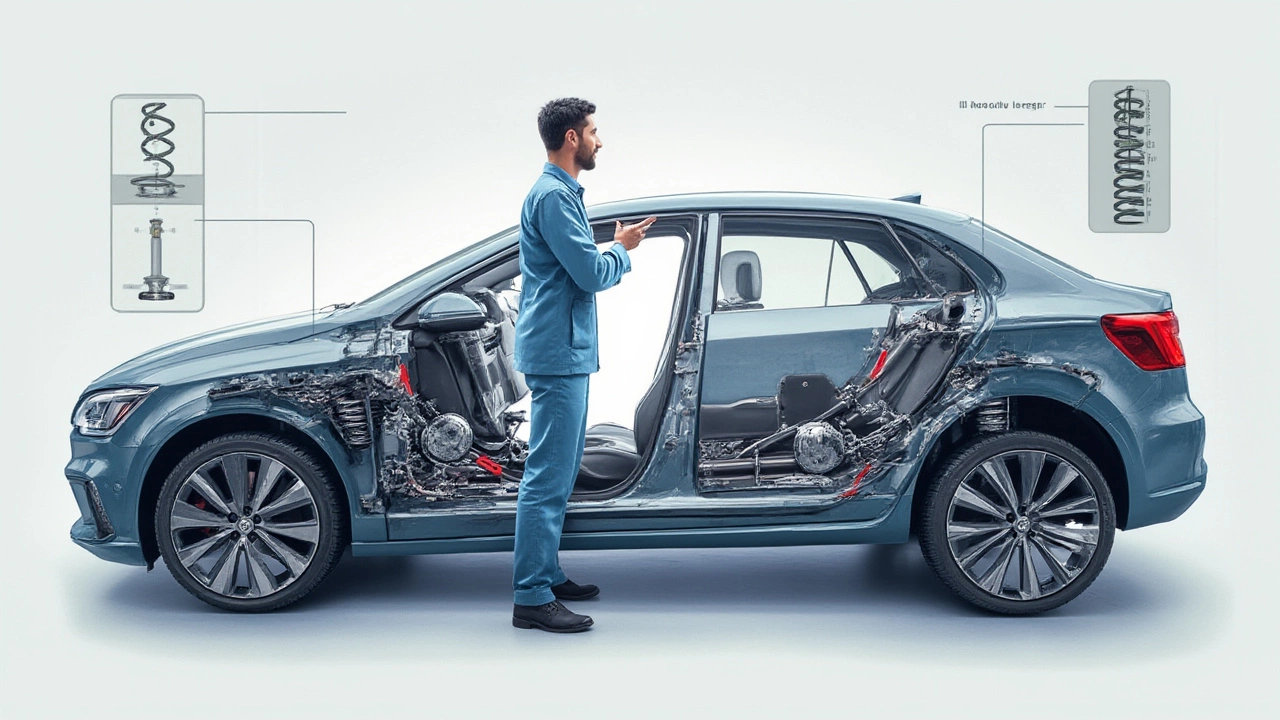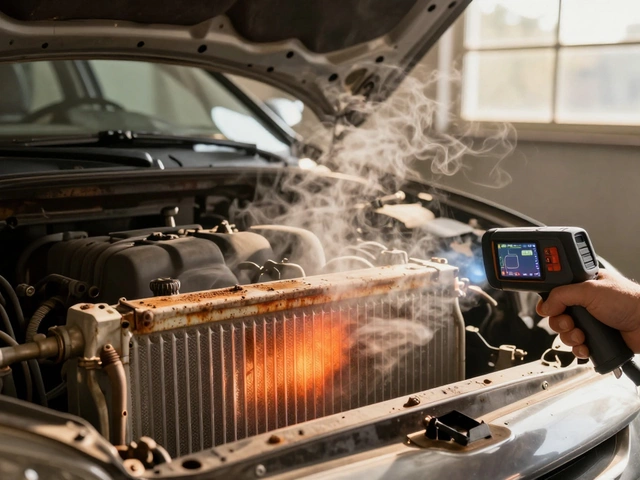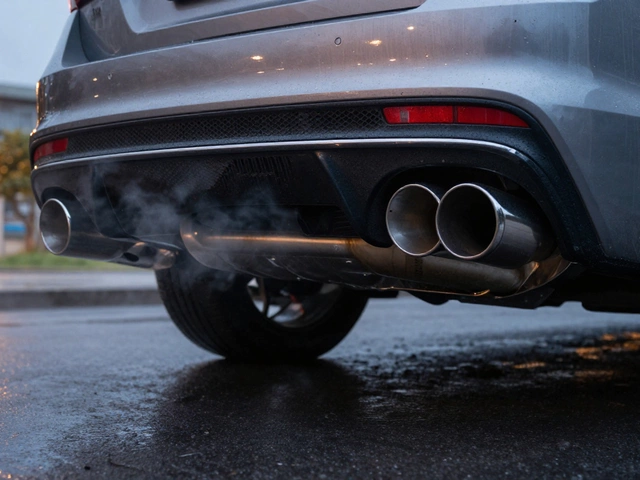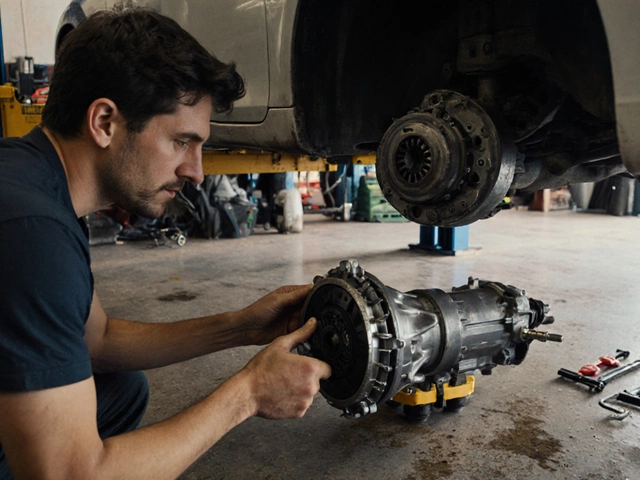Car suspension is like the unsung hero underneath your ride. You don’t see it at work, but you sure notice when something’s off—say, when you hit that pothole that rattles your fillings. Some drivers barely think about what’s keeping their tires on the ground and their chins off the dashboard. But under all those layers, the real magic making your commute tolerable hinges on one surprisingly widespread design: the MacPherson strut suspension. Car makers love it, mechanics swear by it, and drivers usually don’t realize it’s what’s saving their coffee from launching across the cabin each morning. But how did one design become the king of suspensions, and why is it stashed in so many cars worldwide?
Why MacPherson Strut Became the Go-To Suspension
Jump back to 1949, and engineer Earle S. MacPherson pops up with his trademark design meant for Ford, not thinking he would set off one of the biggest quiet revolutions in how cars are built. The idea was simple: make something that did the job of holding up the car, absorbing road bumps, and letting the wheels move, all with fewer parts and less fuss. The most common suspension you’ll find rolling under a sedan, hatchback, or even entry-level SUVs these days is the MacPherson strut—because it’s got the goldilocks combo of price, simplicity, and just enough performance.
At its core, this system swaps the old-school, multi-link, slow-to-build setups with a straightforward design using a single damper (the "strut"), coil spring coiled around it, and a few mounting points. Here’s the quick payoff: less cost-per-car, more space for the driver, and fewer headaches when things wear out. Automakers can crank out more affordable, lighter cars by slotting in MacPherson struts, which can free up room in an already packed engine bay (ever see under the hood of a small car?). On a global scale, it shows up in about 70-80% of mass-produced front-wheel-drive cars—yes, that’s nearly every other car zipping past in traffic.
Ever owned a Toyota Camry, Honda Civic, Volkswagen Golf, Hyundai Elantra, Ford Focus, or basically any mainstream compact from the 1980s onward? Congratulations—you’ve probably ridden on a MacPherson. Even some small SUVs rock this setup up front, since the strut design leaves more room for all-wheel drive gear and modern engine tech. Got sporty dreams? BMW’s legendary 3-Series used it for years, balancing that classic sporty feel with real-world ride comfort.
Why did MacPherson become so beloved? The numbers tell the story. One international auto report from last year pegged the global light vehicle output at roughly 85 million units, and estimates suggest well over 55 million of those left factories equipped up front with this design. That statistic explains why parts are cheap, there’s a mechanic around every corner familiar with it, and aftermarket replacements abound. Simplicity scales—when you’ve got a design that only needs three mounting points, assembling and repairing gets faster, too. If you’re ever stuck at a garage, your odds of waiting long for MacPherson parts are almost none.
But it’s not all about savings and simplicity. Guess what? The MacPherson strut manages to keep the tire tread flat during turns and braking, thanks to how it controls vertical motion. It might lean a bit more in fast corners than complicated multi-link types, but unless you’re track racing, you’ll rarely notice.
Car makers do tweak the design for bigger vehicles, like trucks or heavy SUVs. These often use beefier setups—think double wishbone or multilink—for strength and handling when towing lots of weight. But get into any city, look outside, and there’s a strong bet most cars around you use MacPhersons up front, if not all around.
| Suspension Type | Estimated Percentage (%) |
|---|---|
| MacPherson Strut | ~70 |
| Double Wishbone | ~15 |
| Multi-Link | ~12 |
| Torsion Beam/Rear Twist Axle | ~3 |
So, every time you breeze over a speed bump without taking flight—or cringe at an overlooked pothole—chances are you’re relying on the hidden handiwork of this straightforward, cost-effective engineering marvel. No wonder it’s still king of the road.

Breaking Down How MacPherson Struts Work (And Why You’d Care)
A lot of drivers shrug when asked about what holds their car’s wheels in place. But if you’re the sort who notices a rattle, uneven tire wear, or that rogue shimmy on the highway, understanding this design can actually help you save money and pick out better rides. So, how does a MacPherson strut actually work under the hood?
The MacPherson system fuses the shock absorber and coil spring together into one tidy assembly. This combo mounts straight from the wheel hub, runs vertically up, and locks right to the car’s top chassis (usually under the inner fender). The lower part of the strut bolts to the steering knuckle—the bit that swivels the wheel for turns. The spring manages the up-and-down energy from bumps, while the damper inside stops that boing-boing effect that would otherwise send you bouncing down the street. It’s glued together with a control arm or wishbone that keeps the wheel headed the right way.
Let’s talk about comfort and handling. MacPherson struts are game changers for average roads—they let car designers fine-tune how soft or stiff your daily ride feels. A sedan built for commutes might get softer suspension for a floaty, comfortable vibe, while a sportier model might stiffen the struts for tighter cornering. And because the system is lightweight and simple, it doesn’t add useless weight or complexity. More weight means a thirstier car; lighter suspensions help with fuel economy, which is why small cars and hybrids almost always lean this way.
Here’s another plus: If you ever smash into a curb or hit a big pothole, MacPherson strut systems aren’t too hard or expensive to repair. Most of the parts are accessible without pulling half the car apart. That means shorter trips to the shop and less time waiting for rare, exotic parts. It’s even DIY-friendly for basic jobs—like swapping struts or bushings—if you know your way around a spring compressor and jack stands, although using proper safety gear is a must because compressed springs can be risky.
Want to avoid blown struts or bouncy rides? Here are a few things to watch for:
- Clunking noises when driving over bumps—could mean worn strut mounts or bushings
- Drifting or pulling while braking—possible bent strut housing or worn parts
- Uneven tire wear—your struts aren’t keeping the wheel vertical on the road
- Fluid stains on the strut shaft—means your strut is leaking and about to give up
- Strange “boing” after a bump—inadequate damping, time to swap them
Safety-wise, a healthy MacPherson suspension is more than just a comfort feature; it’s crucial for keeping your tires in contact with the road, especially during emergency stops, quick swerves, or slippery roads. Cars with bad struts take longer to slow down and tend to swerve more when you least want them to.
The design does come with a few trade-offs. Since you only have one upper mounting point, some high-end sports cars or big, heavy rides shy away from struts in favor of setups with tighter angle control, like double wishbones or multi-link. But engineers have gotten clever—today’s struts are tougher and more finely tuned than ever before. If you spend your day on rough city streets, the MacPherson balances comfort and durability about as well as anything out there.

Tips for Maintenance, Upgrades, and Getting the Most Out of Your Suspension
Grab a flashlight and peek through your car’s front wheel well—if you spot a big coil spring wrapped around a thick metal tube, anchored by a beefy lower arm, you’re probably looking at a MacPherson strut. Keeping your suspension in good shape isn’t just for gearheads or weekend mechanics. It’s the secret to a car that feels locked to the road instead of stumbling through every rut.
Regular tire checks are the low-hanging fruit. If you see cupping, feathering, or rapid edge wear on your tires—don’t wait. These are warning flares that your struts or alignment need attention. Struts themselves usually last about 50,000 to 80,000 miles, depending on roads and driving habits. If your car has crossed that mark, consider a checkup—especially before long road trips. Some automakers even recommend scheduled suspension checks every 20,000 miles.
Thinking of upgrades? Here’s where the MacPherson shines for the budget-conscious. Adjustable coilovers (fancy speak for shocks/springs you can tune yourself) let you sharpen up handling or bring your car closer to the road for a sportier look. Just swap out the stock strut and spring with a coilover kit—often bolting right in for common models. Even basic aftermarket struts or performance bushings can give tired suspension new life and sharpen up driving feel.
For those in snow or rain country, don’t ignore the tiny bump stops and boots on each strut. If these rubber covers split or tear, grit and moisture sneak in, and your strut seals won’t last long. A yearly inspection is usually enough to catch cracked rubber. Fresh bushings—rubber cushions that separate metal parts—save your ride from squeaks and excess vibration.
When it’s time to swap struts, doing both sides is much smarter than just one. A new strut on one side and an old one on the other? Your car might sag, pull, or wallow in a way that’ll drive you nuts. Stick to matched pairs, and always get a post-replacement alignment—MacPherson suspensions are sensitive to tiny angle shifts, and a good alignment keeps tire wear down and steering sharp.
For used-car hunters, the MacPherson’s prevalence means you’ll save buying mainstream models, since replacement parts spring up everywhere. And for anyone set on DIY repairs, invest in a solid spring compressor—borrow or rent if you have to. Strut swaps aren’t rocket science, but it’s one of the few spots on a car where brute force can get ugly fast if something slips.
One thing not enough people realize: Keeping your struts happy pays off at the fuel pump too. Sagging or leaky struts put more load on tires and engine—translating to lower mileage, slower acceleration, and more stops at the gas station.
At the end of the day, the MacPherson strut’s claim to fame is its versatility. It works for the commuter chasing comfort, the city driver weaving potholes, the enthusiast craving bolt-on upgrades, and the budget-focused family looking for reliability. Peek under your hood and you’ll probably spot the reason why your wheels stay level no matter what the road (or life) throws at you.










Write a comment